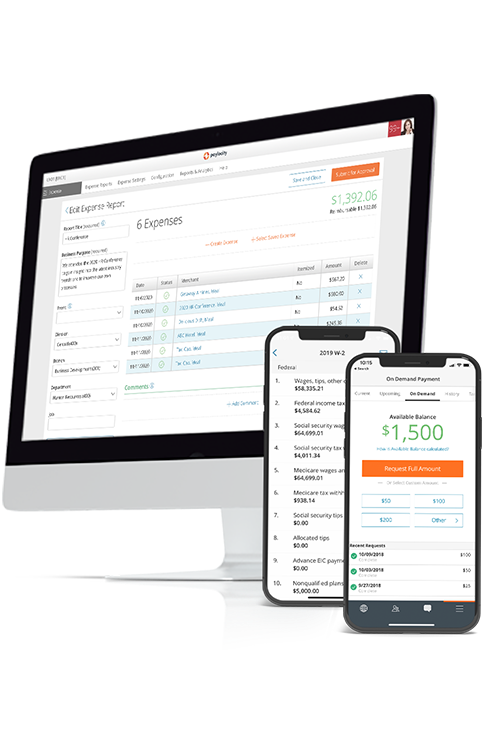resources
Knowledge Transfer: What It Is and Why It’s Important
July 31, 2023
Knowledge transfer involves creating well-defined processes to encourage a culture of knowledge sharing. This stops your company from getting caught out when people leave or retire.
Blog Post

When you remove a Jenga piece, you do so with great care, knowing the rest of the tower needs to still be able to support itself — get it wrong, and the whole thing collapses.
Knowledge transfer is a very similar concept. If an employee with a wealth of knowledge and experience is off to new pastures and you haven’t ensured their wisdom has been passed on, you’re leaving your organization teetering.
So, whether it’s one person leaving, or dozens, there has never been a better time to implement a knowledge transfer (KT) strategy to ensure you don’t get caught unsupported. Let’s explore what KT is, and how to implement it at your organization.
Key Takeaways
- Knowledge transfer (KT) is how organizations can preserve vital expertise.
- It's more than just a checklist when an employee leaves — it's about encouraging a culture of knowledge-sharing at all times.
- KT should include both explicit (tools and tech) and tacit (experiential and relational) skills
What Is Knowledge Transfer (KT)?
Your people have a lot of business-critical knowledge in their heads. And the longer they stay with your organization, the more of it they amass.
Whether it’s familiarity with the quirks of your tech stack or knowing which table your restaurant regulars prefer, all of it is essential information that helps things run smoothly.
Regrettably, businesses often underestimate the impact of their staff members in supporting seamless workflows. These skilled individuals make it look effortless, but when they suddenly leave, taking their knowledge with them, it can trigger a full-blown crisis.
Knowledge transfer (KT) is how organizations can preserve that vital expertise.
But knowledge transfer is more than just a linear passing on of information from one individual to another. It’s also about putting well-defined processes in place to encourage a culture of knowledge-sharing. That’s how you create a KT system that works like a well-oiled machine, setting your business up for the future.
To transfer knowledge effectively, the first thing you need to do is establish a road map that'll take you from where you are now to where you want to be. That’s where having a KT checklist comes in.
How to Create a Solid KT Checklist
Now that we understand the importance of KT, let's talk about how to make it actionable in your org. Here are five essential elements you need to get started:
1. Evaluate both your highest risks and future needs.
Some divisions of your company may rely more heavily on employees who plan to retire soon. In that case, you’ll want to factor in areas of growth and profitability when thinking about how to develop a strategy for dealing with retirements.
Determine which employees are likely to retire and ensure there’s a succession plan in place. Ask yourself if these individuals can be replaced internally, or if you’ll need to dip into your external talent pool for candidates.
2. Identify the knowledge you need to capture
This can be trickier than it first appears. Some of the knowledge you need to collect and store will be obvious, but some will be less so. You can categorize knowledge into two types:
- Explicit knowledge. This includes any kind of knowledge that can be documented formally. Examples could include a company report or a staff roster. Explicit knowledge can be easily shared because it’s a straightforward matter to write it down.
- Tacit knowledge. This is the relatively hidden knowledge your employees gain from experience. It includes things like workarounds for unsolved problems or how best to communicate with particular clients.
Documenting explicit knowledge is easily done via written methods, such as surveys and questionnaires. To capture tacit knowledge, you should consider branching out into initiatives like one-on-one interviews. This will give you a chance to explore your departing employee’s knowledge in more depth.
3. Draw on existing information
Remember, as long as you have effective HR and talent feedback systems in place, you don’t need to start from scratch. The organizations with the best KT plans tend to be the same ones that already encourage open communication and collaboration between teams.
The more transparent your workflows are, the easier it is to establish what critical knowledge needs to be retained. This means using platforms that simplify how to share information, and fostering a culture of openness.
Get imaginative. Consider implementing an employee peer recognition program to highlight the daily contributions of your workforce. You'll be putting their achievements front and center, giving you a practical view of how staff rely on each for success (and who's consistently outperforming.)
Ways to Implement an Effective KT Plan
So, you've identified your critical knowledge and who has it. Now let's dive into some practical ways you can implement KT initiatives.
Shadowing
Shadowing involves employees learning directly by observing someone else at work. It’s great for transferring all that tricky-to-reach, tacit knowledge. That’s because it gives the learners the opportunity to see how to deal with issues that crop up in the day-to-day running of operations.
In some ways, this technique has echoes of the early stages of a traditional apprenticeship scheme. Although it’s not as formally defined, it has a similar objective: the transfer of knowledge via the watch-and-learn system. It works well because it gives the learners confidence they’ll make the right decisions when they’re on their own.
Collaborative projects
When it comes to KT, the importance of effective collaboration simply can’t be overstated. The more you encourage your teams to work with each other, the more of an overlap there'll be in the knowledge sets of everyone involved.
In fact, this tip is more about taking a pre-emptive approach. Focus on breaking down knowledge silos to reduce the amount of knowledge that depends on only a few individuals. That way, it’s much easier to achieve continuity and reduce the risk of losing crucial information when someone leaves.
Mentoring
Mentoring shares many of the benefits of shadowing but is more hands-on. It can take many formats, but usually it involves the mentor giving the mentee direct feedback on their work and making suggestions for how to improve.
Why not set up a mentorship program between the soon-to-retire employees and younger talent? It's the perfect chance for seasoned talent to pass on their know-how to the next generation of leaders. Your employees will appreciate the professional enrichment, plus your organization won't lose the expertise of senior staff when they retire.
It can, however, represent a considerable time investment for the mentor, so it won’t be the right fit for all situations.
Nevertheless, if you have the resources to implement it, it’s worth considering. It’s another great way to transfer the kind of experiential, tacit knowledge that can make a real difference in everyday operations.
Knowledge-sharing tools
In the modern business world, we’re lucky to have terrific tools available that help with sharing knowledge. A learning management system (LMS) is designed to house professional development and training materials in a searchable digital platform.
The beauty of this kind of tool is that it centralizes your knowledge base. And an LMS can handle a variety of media (video, checklists, pdfs, and even interactives), so you aren’t restricted to Word documents when capturing vital knowledge.
The user-friendly and on-demand of an LMS helps build that culture of knowledge sharing that’s critical to effective KT. HR pros can tap into internal subject matter experts to help build the library of coursework that fits their organization. And employees can access this repository whenever they need to (from any device).
Challenges of the KT Process
It’s not always smooth sailing, of course. KT methods aren’t completely foolproof, and there are many challenges you can encounter as you move through your KT process.
- Communication problems. These can be technical, but they could also be interpersonal. If a mentor and mentee don’t have a good working relationship, for instance, it can undermine the process.
- Patchy documentation. If the quality of your existing documentation is poor, simply sharing it more widely won’t necessarily be effective.
- Teams lacking cohesion. Effective KT needs buy-in from those directly involved. If teams aren’t working together properly, it can be difficult to make the KT process stick.
- Hybrid working challenges. If your team is spread out, with some on-site and some working remotely, coordinating KT can be more difficult than if everyone is located in the same place.
- No official accountability. If there’s no clear line of responsibility for the process, KT plans can fall between the cracks.
None of these problems are insurmountable. But they do require more than just a casual effort to fix, especially if they're longstanding issues. Be intentional!
Ensure Your Company Retains Vital Information with KT
People come and go. That’s just part of life. In a business context, the most important consideration is continuity. You need to be ready to transfer business-critical knowledge when employees move on, as they inevitably will.
Here at Paylocity, we offer a platform that helps you centralize your knowledge base and encourage your teams to collaborate so this knowledge spreads freely.
- Equip your talent with tailored career development programs with a learning management system and internal video tools.
- Foster a culture of open communication via peer feedback tools and community groups.
Sound like a game-changer? Request a demo today!
FAQs about Knowledge Transfer
What should I include in my KT templates?
The details of the KT template you use will vary depending on the area of work you’re in and the role(s) being covered. The aim of this KT document is to provide a framework for data collection, but it shouldn’t be completely formulaic — you need to leave some space for organic feedback.
That said, typical elements you’ll find in KT plans include:
- Employee details
- Description of role and responsibilities
- Projects worked on and notable points arising from them
- Client contact details
- Challenges faced and how they were met
- Invitation to give other comments
How can I deliver an effective KT session?
When it comes to KT sessions, planning is key. Whether you’re delivering a formal training seminar or going the one-on-one mentoring route, make sure you have a laser focus on the following aspects of the task:
- Prioritizing the most business-critical knowledge. Put it front and center to ensure it sticks.
- Ensuring knowledge is shared with all the right people.
- Active listening — this isn’t an info dump situation; communication should go both ways.



